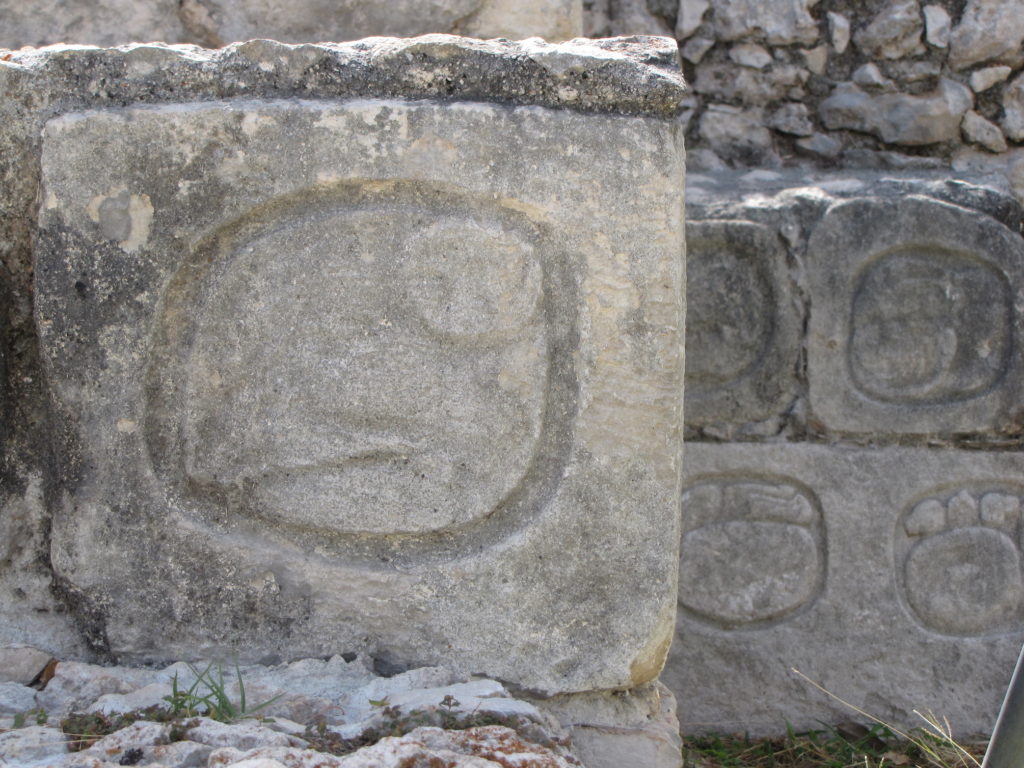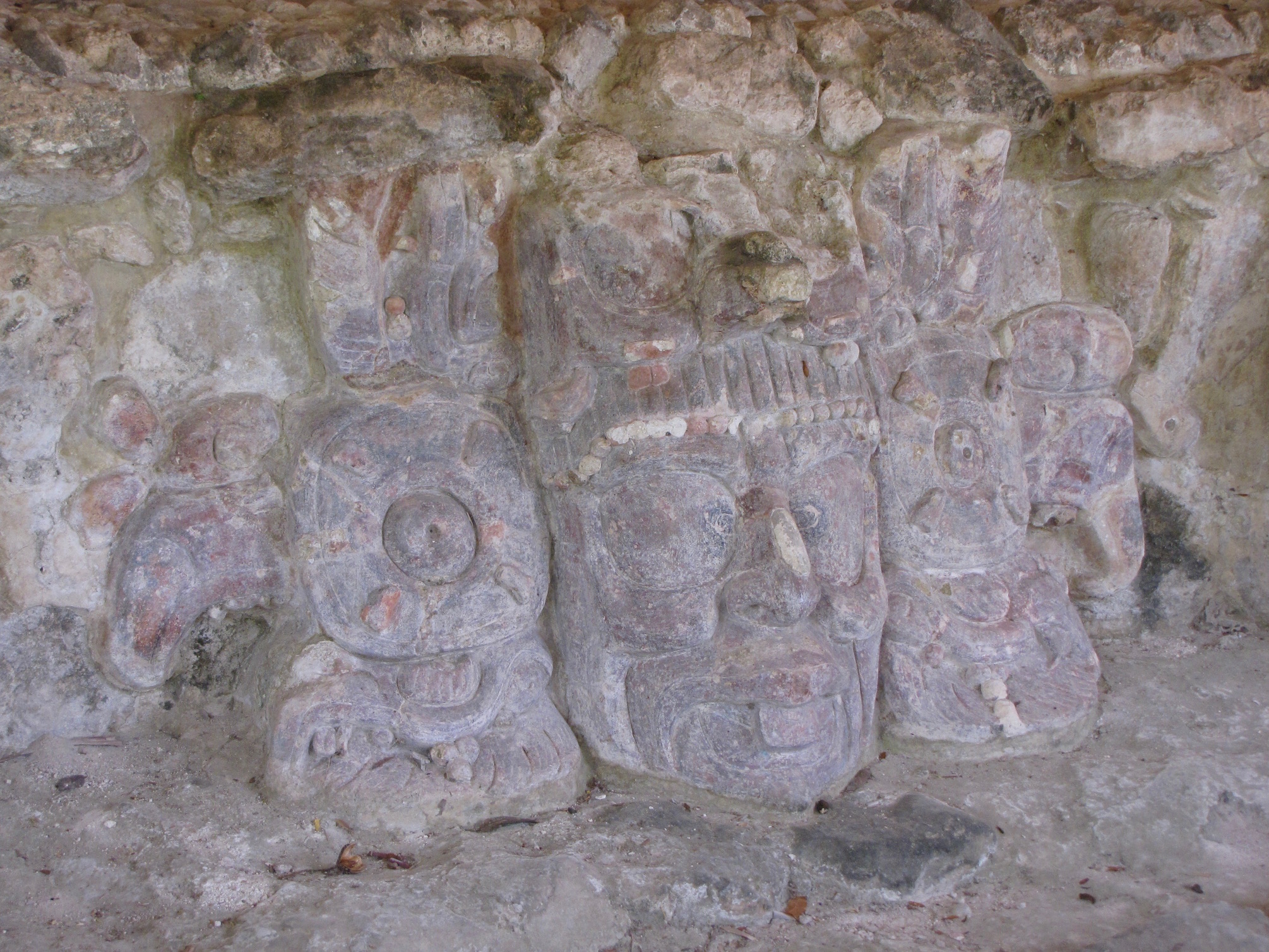
Edzná’s ruins lay about 50 km to the southeast of Campeche, with the way clearly marked by official traffic signs along (mostly) good roads. And yet, even with this relative ease of access from the region’s capital, we shared the impressive city with only a few other tourists.
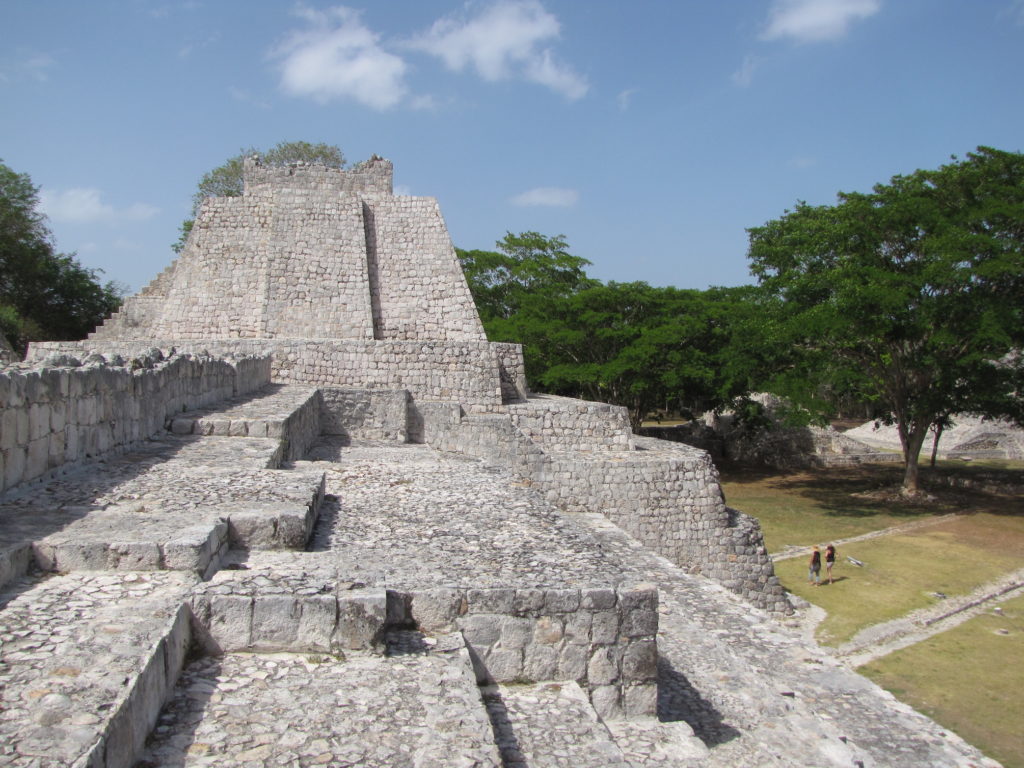
Most of the existing architecture here dates to 750-950 CE and is Puuc in style, making Edzná the southernmost city of the Puuc culture. However, the area was populated long before the Puuc’s arrival. According to Coe, the first inhabitants settled the valley around 400 BCE, when the Maya of the Petén region migrated north (343). Unlike the arid climate found elsewhere on the peninsula, the valley containing Edzná provided good soil and relatively easy access to water, although lack of drainage and the persistence of a long dry season initially limited its productivity. To counter this cycle of drowned and dried crops, the inhabitants eventually “built the most extensive canal and irrigation network in the Maya region” to drain excess water and save it for the dry months (343). This in turn allowed the small agricultural and trading town to grow into an important and heavily populated center.
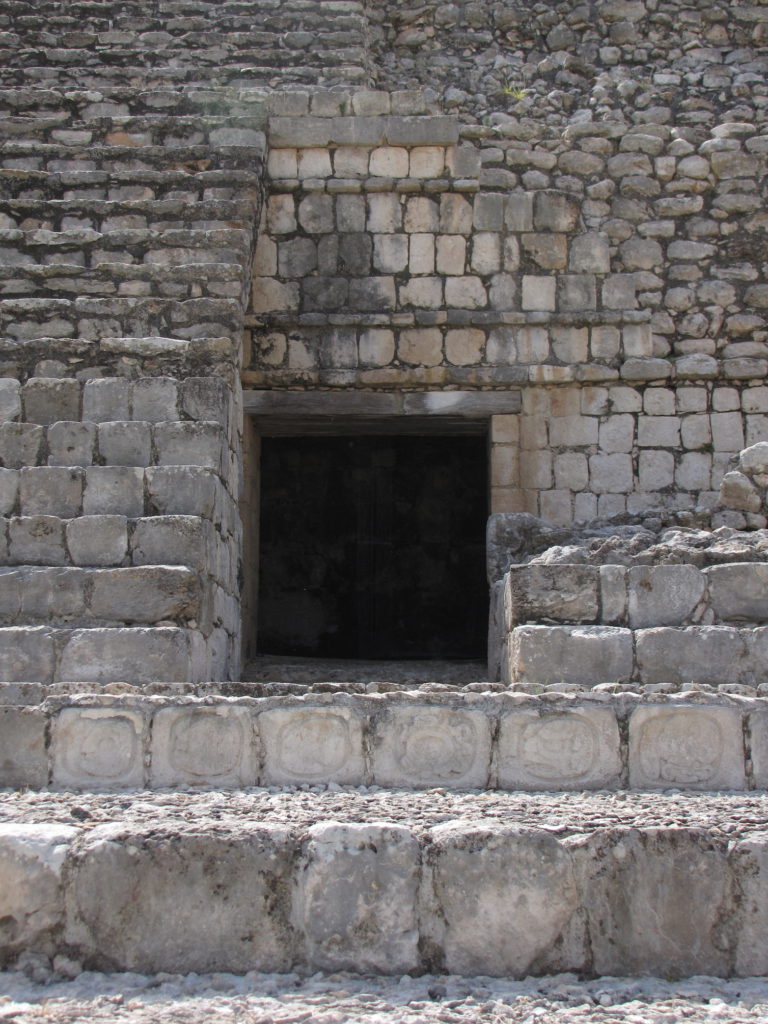
There are several groups of buildings within the extensive site, but our visit focused primarily on three highlights. The first of these was the collection of stelae located in a modern, thatched structure between the parking and main archaeological areas. Although they vary in size and condition, a number of the stelae here still display a high degree of detail and are accompanied by good explanatory text in Spanish.
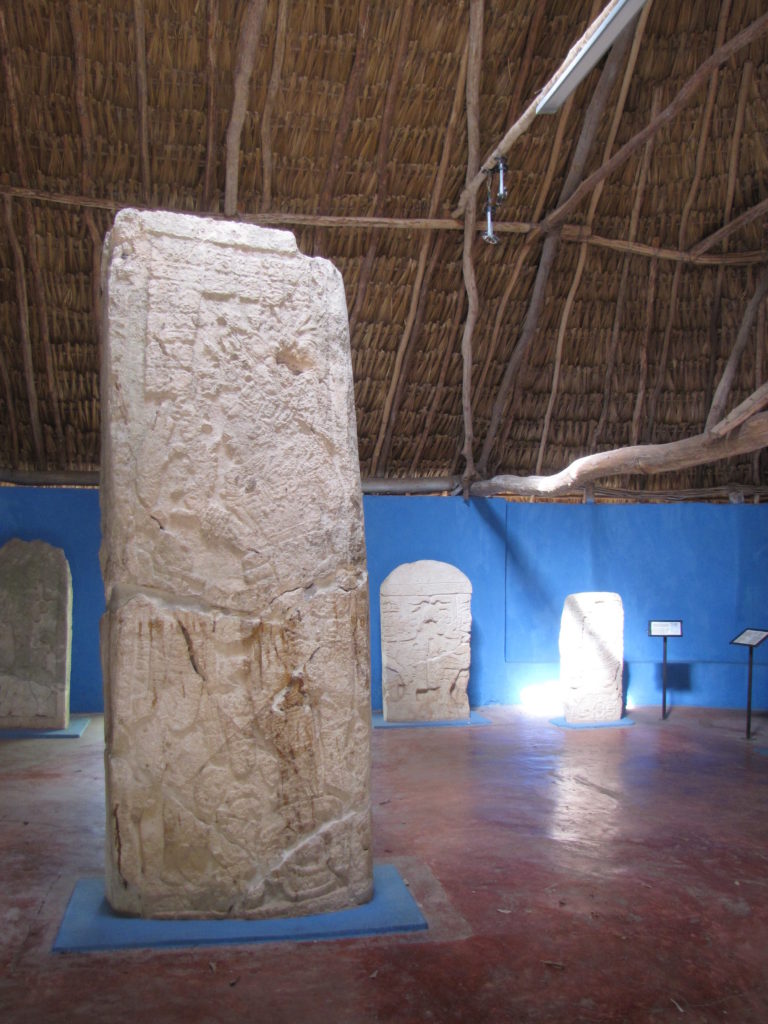
Two, Stelae 8 and 9, are particularly unusual in the way they present the human form. Whereas figures on stelae typically appear in profile and face inward, their actions illustrating an important historical moment (see Stela 2, above), those on Stelae 8 and 9 simply stand back-to-back. Their bodies fill the front of the stone, pushing their profiles to the corners so that their faces wrap around to the sides’ edges (see Stela 9, below). Despite the lack of obvious action, the inclusion of a date in the band of glyphs near the top of the stone suggests that these figures also represent a specific historical moment.
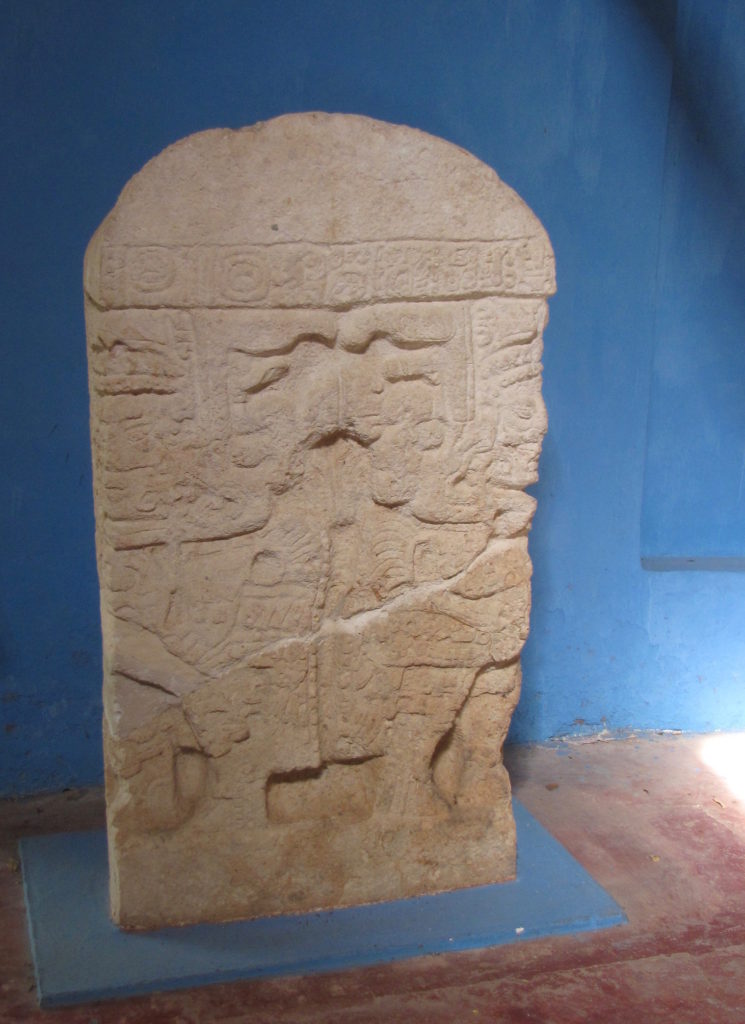
From the stelae pavilion, we entered the archaeological area and made a beeline south through the Main Plaza, past the Great Acropolis, to the small but exciting Temple of the Masks.
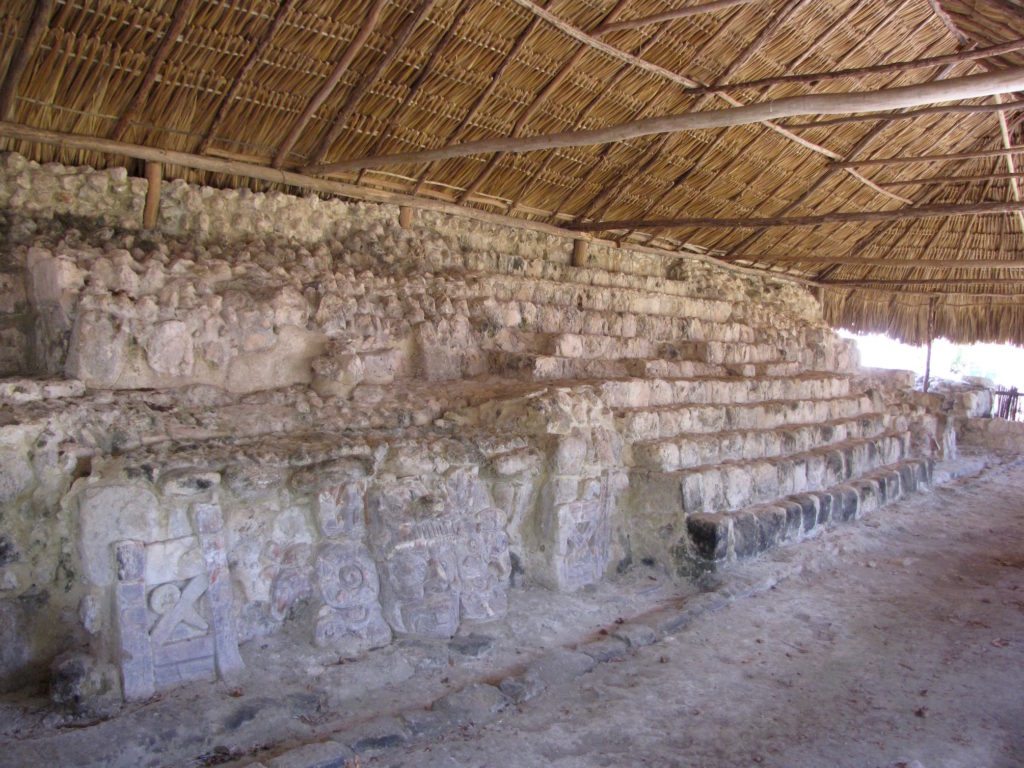
Another thatched roof covers and protects the pair of well-preserved painted stucco faces that grace the temple’s base, while a thin rope fence discourages visitors from getting within touching or climbing distance of the building. The wide-eyed masks, one on each side of the central staircase, are probably personifications of the rising and setting aspects of the sun, represented by a youth to the east (left) and an elderly male to the west (right). Both aspects possess large earspools and what appear to be jutting, upper teeth. Crossed eyes, a sign of beauty, are especially noticeable on the young, eastern face.
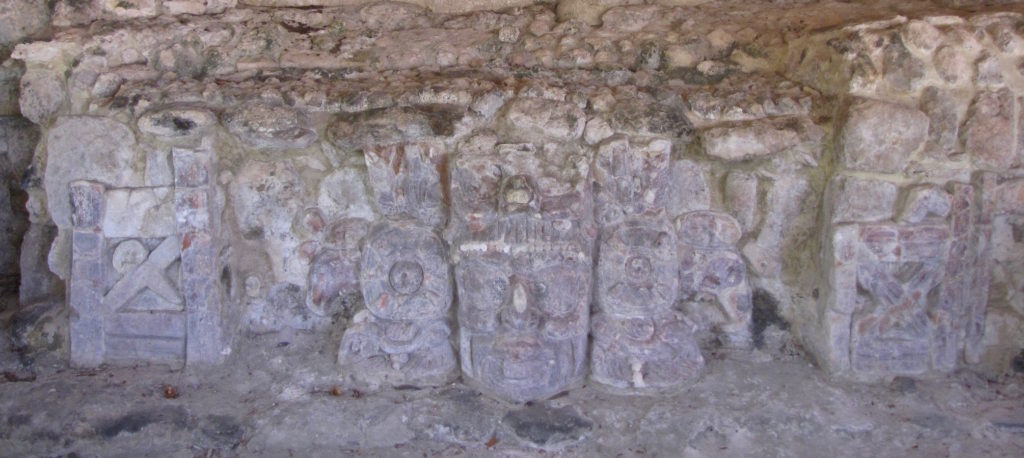
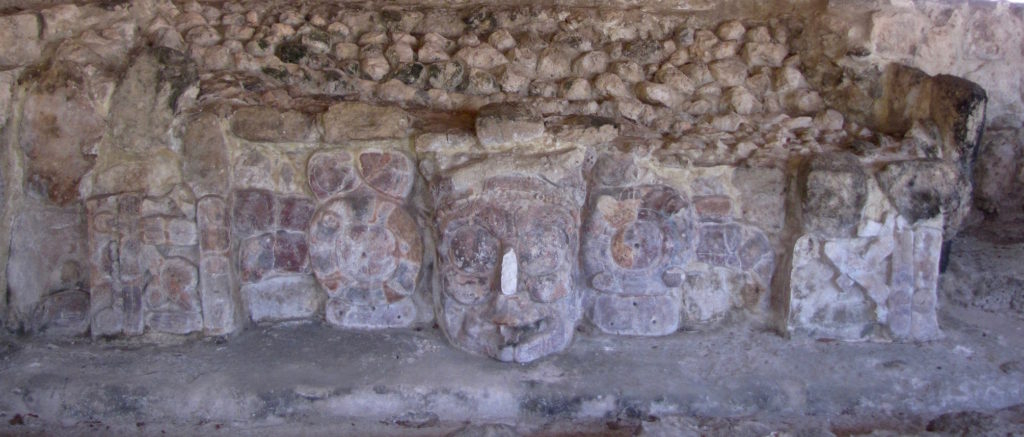
Doubling-back, we returned to the Main Plaza and climbed the steps up the massive stone-and-earth platform that supports Edzná’s Great Acropolis.

Upon reaching the summit, we were immediately struck by both the enormity of this entirely man-made square and the almost pristine geometry of its structures. However, our attention soon turned to a single focal point. Across the courtyard, directly opposite the staircase, loomed the Building of the Five Stories, a great pyramidal monument standing twice as high as its most substantial neighbors.
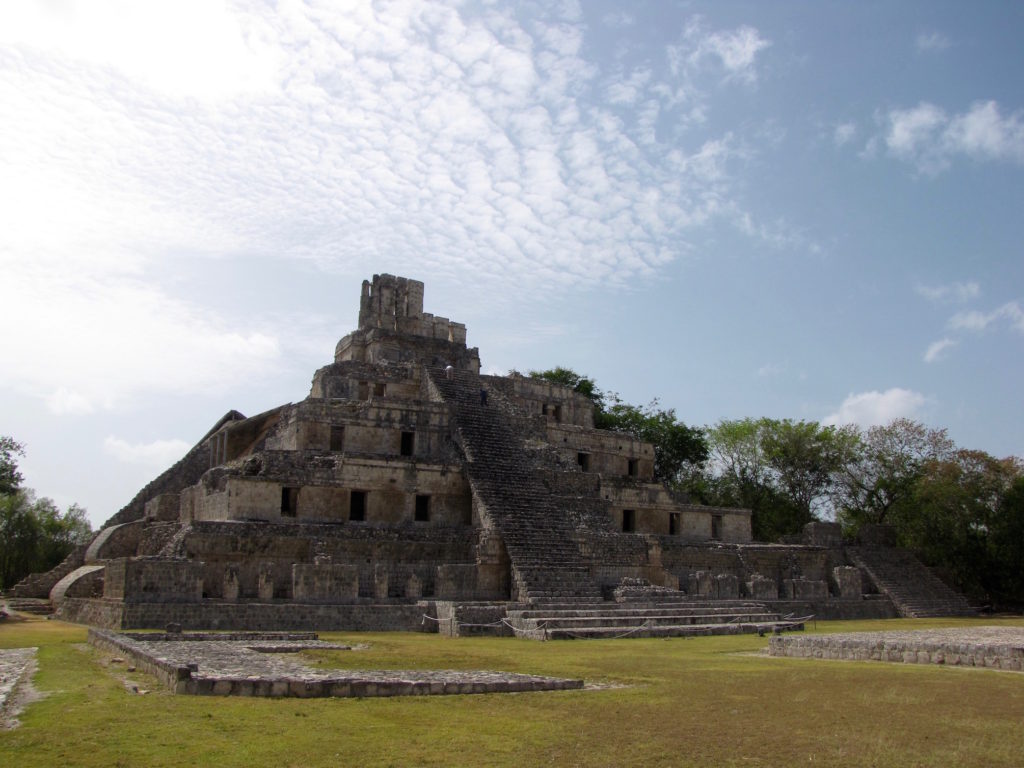
Although similar in size and shape to the grand pyramids of other sites, in function the Building of the Five Stories has more in common with the palaces of the central Puuc region. Whereas Maya pyramids are largely solid structures built to support temples on their uppermost stories and/or contain sealed, hidden burial chambers, the façade of the Building of the Five Stories is punctured at every level with open doorways leading to vaulted rooms. On May 1 and August 13, the setting sun fills these chambers with light (Coe 347). The structure thus probably served as both a residential building for the elite and as a ritual focal point for the city as a whole.
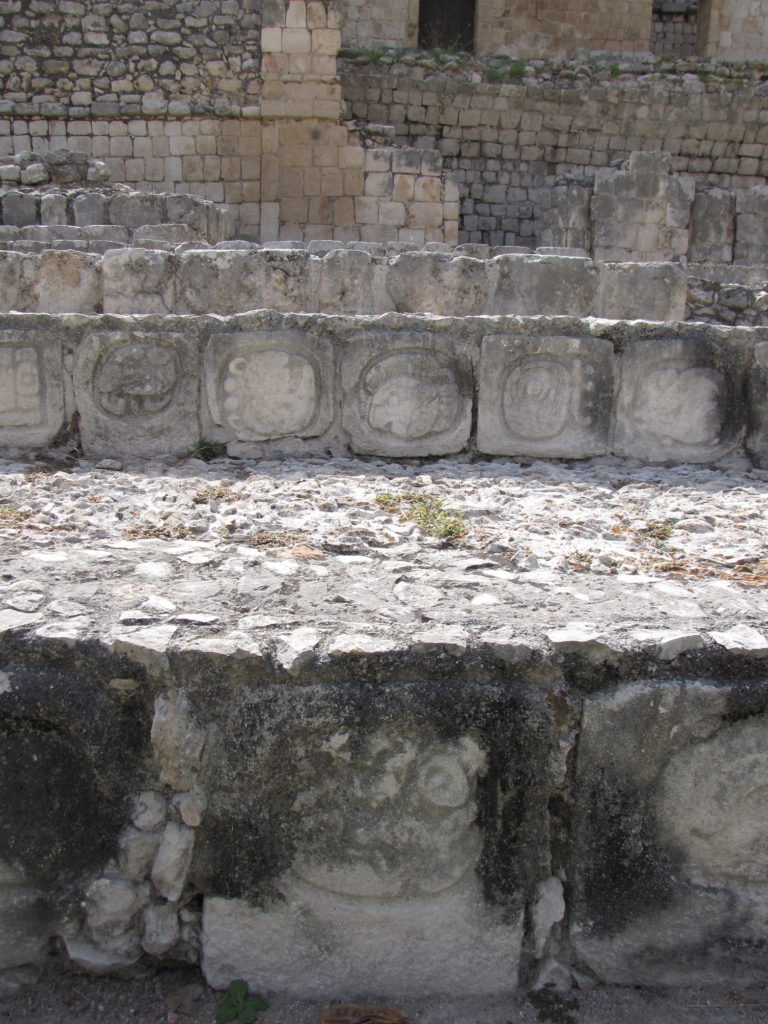
Visitors can no longer climb up the Building of the Five Stories, but they can still get quite close to its lower steps. Upon inspection, these stairs revealed rows of stones decorated with large glyphs. Known as the Hieroglyphic Staircase, the wide, deep steps leading from the ground to the first story possess some of clearest writing and low-relief sculpture we encountered in situ over the course of our trip and were, for us, Edzná’s final highlight.
Highly subjective personal rating: 8/10
